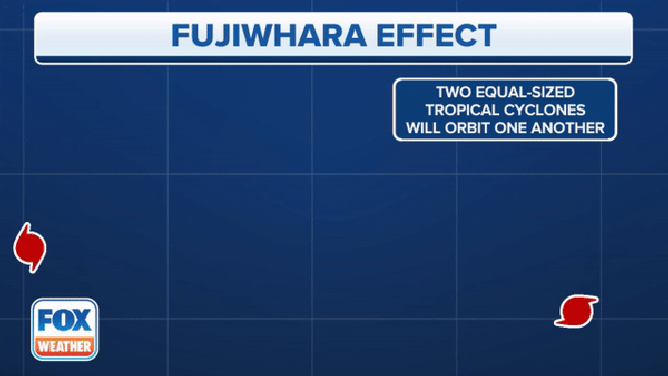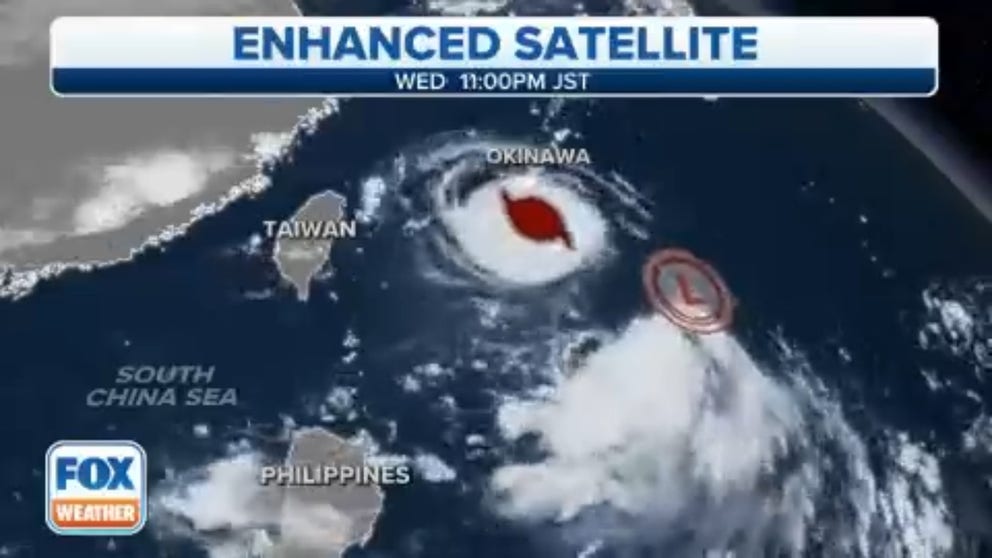What is the Fujiwhara Effect?
This dance in the tropics can lead to the demise of one tropical cyclone and the strengthening of another.
Hurricane Imelda forms off Florida coast, expected to track towards Bermuda
Imelda strengthened into a hurricane Tuesday morning off the Florida's Atlantic Coast. Hurricane Imelda is bringing swells to the coast of the Southeastern U.S. which can create life-threatening rip currents. Imelda is expected to track towards Bermuda where a Hurricane Watch is in effect.
Hurricanes are among the most intense weather systems on the planet. When two tropical cyclones get too close for comfort, a delicate dance can happen and lead to some unusual things.
Meteorologists call this tropical tango the Fujiwhara Effect. It happens when two tropical cyclones get close enough to each other to create a shared center, forcing the two storms to whip around that common central point.
If one of the storms is stronger than the other, the effect usually leads to the weaker one being gobbled up by the more powerful cyclone. If the storms are similar in strength, they can sometimes merge or just slingshot around each other and continue on their way. On rare occasions, the storms can combine into a larger storm, according to the National Weather Service.
BRYAN NORCROSS DISCUSSES HOW AI WILL BECOME CRITICAL FORECASTING TOOL THIS SEASON

A demonstration of the three scenarios typically seen during the Fujiwhara Effect.
(FOX Weather)
This lesson in physics was demonstrated by Super Typhoon Hinnamnor in 2022 in the Pacific Ocean. Hinnamnor devoured a weaker tropical low that was near it.
The video below shows how Hinnamnor, indicated by the hurricane symbol, pulled the weaker tropical cyclone, indicated by the L symbol, toward it. Eventually, the hurricane overpowered the weaker storm and absorbed it.
IS IT A TWO-NADO? 7 WEATHER PHENOMENA THAT WILL HAVE YOU SEEING DOUBLE
Typhoon Hinnamnor demonstrates the Fujiwhara Effect
Hinnamnor, a powerful hurricane moving toward Japan, demonstrated an interesting phenomenon called the Fujiwhara Effect this week.
According to NOAA, the cyclones need to be between 350 and 860 miles of each other to begin rotating around their common center. That distance is dependent on the size of the storms.

